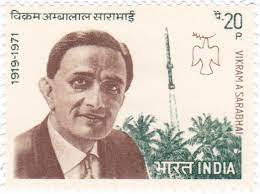Vikram Ambalal Sarabhai (12 August 1919 – 30 December 1971) was an Indian scientist, visionary, and pioneer in the field of space research and atomic energy. He is widely regarded as the father of the Indian space program and played a crucial role in laying the foundation for India's achievements in space technology.
Key highlights of Vikram Sarabhai's life and contributions include:
Founding ISRO: Sarabhai was instrumental in the establishment of the Indian Space Research Organisation (ISRO) in 1969. Under his leadership, ISRO focused on developing indigenous space technologies, satellite systems, and launching vehicles.
Space Research: Sarabhai recognized the potential of space technology for solving socio-economic problems in India. He advocated for the peaceful use of space and initiated projects that led to the development of communication, meteorological, and remote sensing satellites.
Aryabhata Satellite: Sarabhai led the launch of India's first satellite, Aryabhata, in 1975. This marked a significant milestone in India's space journey.
Thumba Equatorial Rocket Launching Station: Sarabhai established the Thumba Equatorial Rocket Launching Station (TERLS), which later evolved into the Vikram Sarabhai Space Centre (VSSC). TERLS facilitated the launch of sounding rockets and scientific research.
Atomic Energy: Apart from his contributions to space research, Sarabhai was also involved in India's nuclear energy program. He was a key figure in the establishment of the Atomic Energy Establishment Trombay (AEET), which is now known as Bhabha Atomic Research Centre (BARC).
Education and Science Communication: Sarabhai emphasized the importance of education and science communication. He founded institutions such as the Indian Institute of Management Ahmedabad (IIMA) and the Community Science Centre in Ahmedabad.
International Engagement: Sarabhai was involved in international collaborations and organizations related to space research. He played a role in establishing the United Nations Committee on the Peaceful Uses of Outer Space (COPUOS).
Vikram Sarabhai's vision and leadership laid the groundwork for India's remarkable achievements in space technology and science. His legacy continues to inspire generations of scientists, engineers, and innovators in India and around the world.









